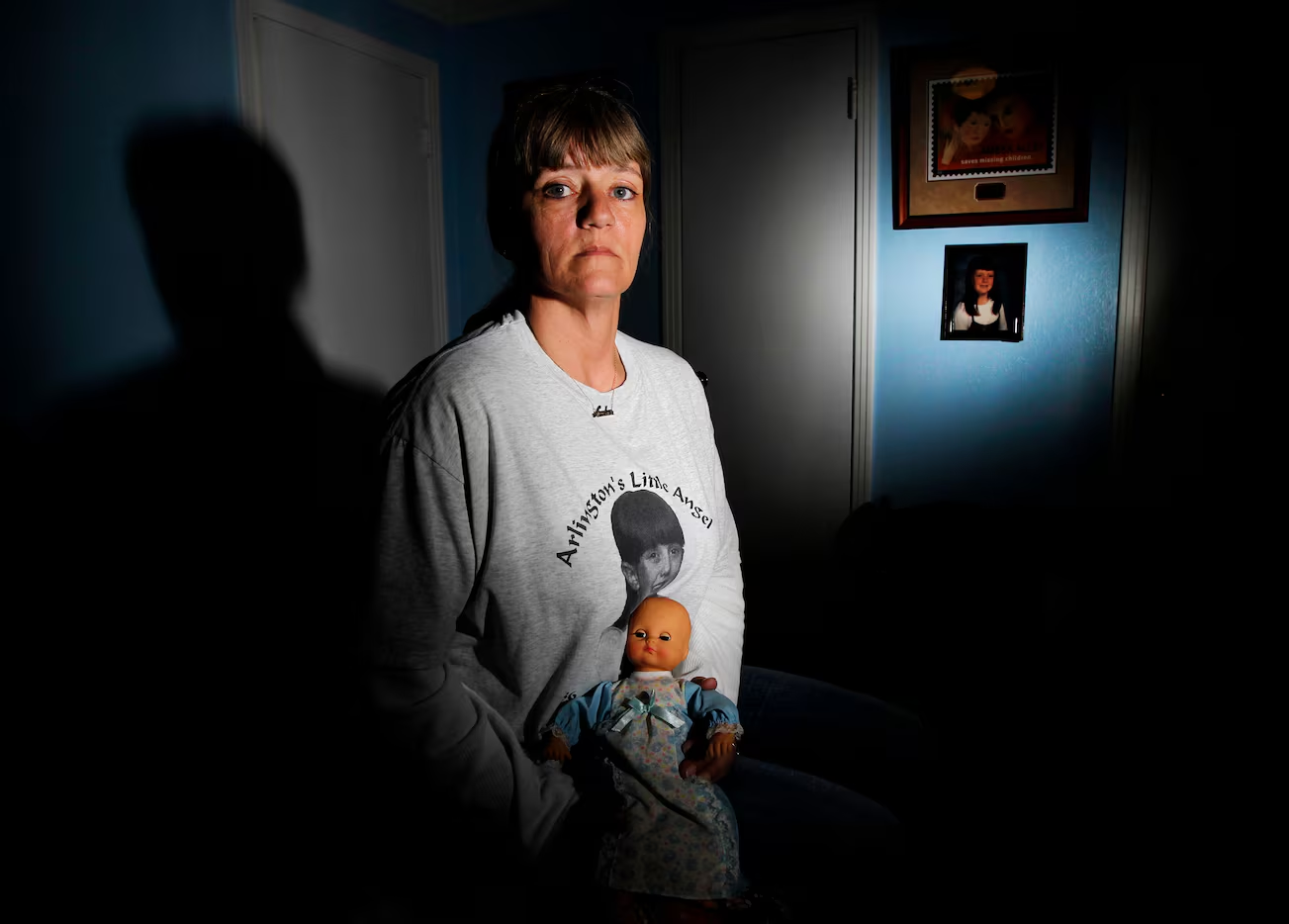When 9-year-old Amber Hagerman vanished Jan. 13, 1996, Sgt. Ben Lopez quickly realized hers wasn’t a typical missing-child case.
He was a patrol officer, driving around Arlington that afternoon looking for a black pickup connected to her disappearance. When he saw media vans lined up, he realized the seriousness of the case.
“I remember seeing that and knowing right away that this was a real stranger abduction,” Lopez said. “Of course, all of us were hoping that we would find her alive at that time.”

A few days later, Amber was found dead in an Arlington creekbed. No one has been arrested for her kidnapping or murder in the quarter-century since. Yet as detectives approach the anniversary of her kidnapping, they hold out hope that the case can be solved.
For the first time, police said they have DNA evidence that someday — with new technology that has solved other high-profile cold cases — could be the key to finding her killer.
The case has never strayed far from the mind of Lopez, who later served for years as the lead detective on Amber’s case, or the other two detectives who headed the investigation.
First, Detective Jim Ford was the lead investigator before his retirement in 2010. Then, Lopez took the case as a homicide detective. Now, Detective Grant Gildon is in charge of fielding the tips that still regularly come in about the case.
What happened to Amber led to changes in how child abductions are handled nationwide. Her dramatic kidnapping and killing sparked national attention and calls for quicker responses to reports of missing children.
The Amber Alert, developed in the years after the crime, is named for her. Across the country, 988 children have been found safe through the Amber Alert system as of May 2020, according to the Justice Department.

25 years later
Since Amber’s kidnapping, Arlington police have received about 7,000 tips. It’s rare for the department to get tips on cold cases, but Amber’s case is different, Lopez said. More tips come in about what may have happened to Amber than any other cold case, he said.
“Anytime an anniversary date comes up or if there’s a similar crime in the country somewhere, those kinds of things will spark someone in the public to call us,” he said.
Those tips are important, but what makes a cold case difficult, Gildon said, is that after the first days following a homicide, many elements of the investigation can’t be re-created or reinvestigated. The man who witnessed Amber’s abduction, Jimmie Kevil, has since died, Gildon said. So have officers who were familiar with the case, including Ford.

The facts of the case are much the same as they were in 1996: Amber was riding her bicycle in the parking lot of an abandoned grocery store with her brother when a man in a pickup snatched her from the bike, pulling her into his truck and driving away. Kevil, the only known witness, reported that Amber screamed and tried to kick her kidnapper. Her body was found four days later.
Police describe the suspect as a white or Hispanic man who would have been in his 20s or 30s at the time of the crime, police said. He was under 6 feet tall, had a medium build, and had black or brown hair.
The vehicle he drove was a full-size fleetside single-cab black pickup with a short wheelbase, police said. It was in good condition at the time, with no visible damage, no chrome or striping and a clear rear window.
“The description that you have from that first day, and some of the details that came in the initial stages, 25 years later, that hasn’t changed,” Gildon said.
Other local cold cases have seen recent breakthroughs — including an arrest in September in the 1974 slaying of Carla Walker, a teenager in Fort Worth. Gildon said he holds out hope for Amber’s case and regularly looks into advancements in technology that could help find answers for her family.
In the Walker case, for example, police used genealogical DNA testing with a small amount of physical evidence to find a potential relative of the teenager’s killer. Similar technology led to the arrest of the Golden State Killer in 2018.
Gildon said the detectives in Arlington have considered using the same technology in Amber’s case.
“I definitely think there could be a breakthrough,” he said. “Some of the things that we’ve seen help solve cases in other parts of the country — five, ten years ago, I never would have imagined that they could have done some of the things that they’ve done now. So I remain optimistic.”
Arlington police declined to provide details about what physical evidence exists in Amber’s case because it is information only the killer would know. They want to prevent false confessions.
It’s unclear what would have been preserved from the original crime scene; Amber’s body was found after heavy rains that could have washed away evidence.
“The only thing that we’re saying at this point is we’ve maintained evidence this whole time, and we still have all of our evidence maintained that can be used,” Gildon said.
Legacy of the Amber Alert
When Lopez or Gildon’s phones light up with an alert about a missing child, their minds always go to Amber.
“Whenever I’ll see it, a lot of times, I think of how much I wish it was a service that had been available at the time of her abduction,” Gildon said.
Amber’s abduction prompted the creation of the Amber Alert, which grew into an international child-abduction alert system. Since Texas’ program was implemented in 2002, the Texas Department of Public Safety has activated 251 Amber Alerts, and 263 people were safely recovered through those alerts, the department said, noting that some Amber Alerts are for multiple missing children at once.
Although local authorities can issue regional Amber Alerts, they must ask the Department of Public Safety to send statewide alerts.
Missing-children cases have to meet specific criteria to qualify for a statewide Amber Alert, including whether there is enough information available to disseminate an alert to the public and the level of danger the child could be in. In other circumstances, police may issue an alert about a missing child, but not through the same media channels as an Amber Alert.
Lopez said it’s meaningful to Arlington police to know the alert Amber inspired has helped reunite families. He knows it’s meaningful to Amber’s family, too — “that at least she lives on through that,” Lopez said.
‘There is someone out there’
Police still keep in close contact with Amber’s family, including her brother Ricky Hagerman, 30, and her mother, Donna Williams. The detectives said that when she learns about a similar case, or about a cold case that has been solved, Williams calls to make sure they heard the news.
She declined to be interviewed for this article, saying she preferred instead to speak at a news conference with Arlington police Wednesday for the 25th anniversary of Amber’s kidnapping.
In a news release from the Police Department, she implored the public and the media to focus on finding Amber’s killer and bringing him to justice.
Gildon and Lopez said that focus is especially important as time passes. For them — and all the detectives who have worked on Amber’s case — the key could be in new witnesses who haven’t come forward since the early days of the investigation.
“Whoever committed this crime, there are people close to them that know what happened — whether they saw something, heard something, or have just felt over time that they were involved in Amber’s murder,” Gildon said. “There is someone out there that knows what happened.”

More information
Arlington police have set up a new tip line for Amber Hagerman’s case. Tips can be shared by calling 817-575-8823.
Oak Farms Dairy is offering a $10,000 reward for information leading to an arrest in the case, police said.


